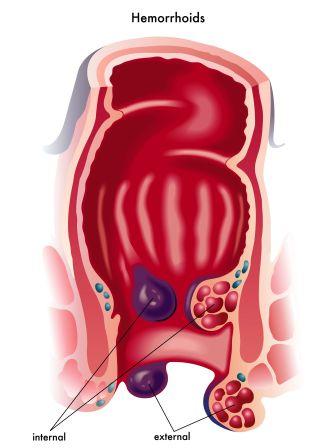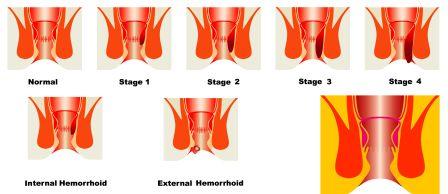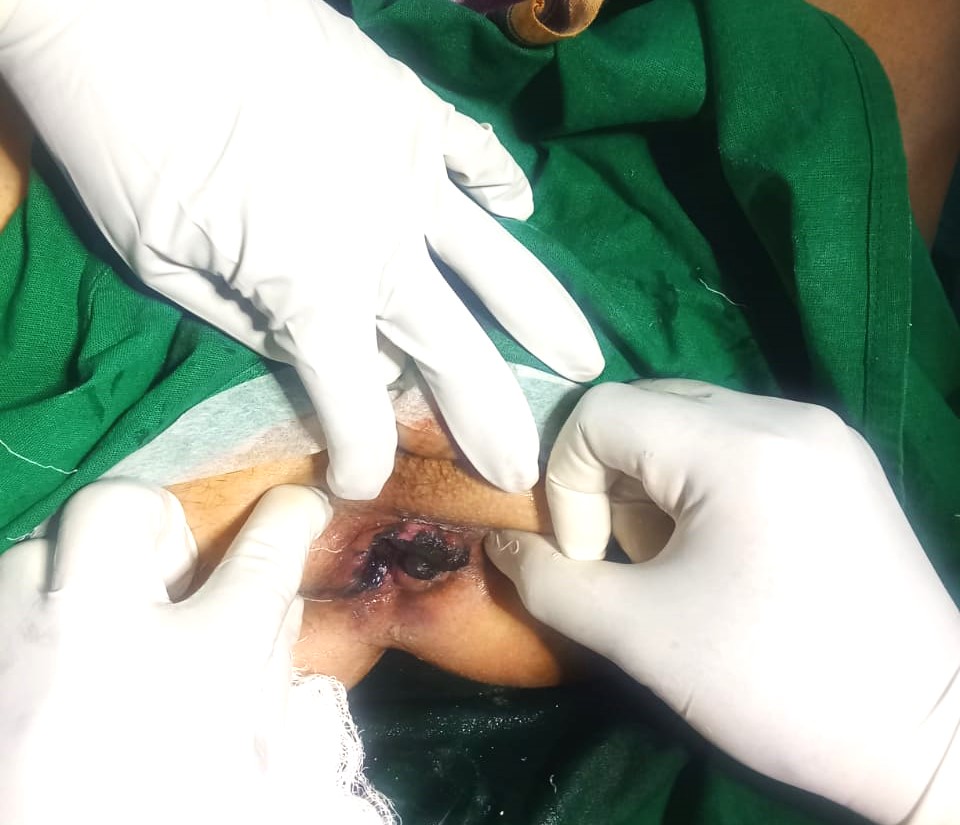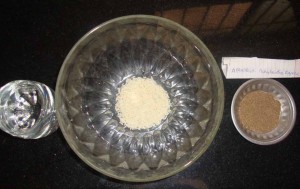Haemorrhoids: Ayurvedic Treatment, Medicines, Remedies
Ayurvedic treatment for Haemorrhoids is classified based on Tridosha imbalance. They are commonly known as piles. It is a painful condition, causing severe discomfort to the sufferers. It starts with a simple complaint of constipation or hard stools. But in quick course of time, haemorrhoid causes difficulty during defecation. Often it causes bleeding and burning sensation as well. Gradually, due to blood loss, person may suffer from fatigue or weight loss. In the long run, anaemia may be caused. So, the patient should be serious from the beginning of the complaint itself.
Table of Contents
Reason for haemorrhoids
Excess intake of pungent, dry, cold and light food, repeated intake of food, spicy food, alcohol, prolonged fasting, excess of exercise, weight lifting, grief, hot climate, oily and fried food, day sleep, horse or camel riding, two wheeler riding etc.
Origin of the disease
Due to the above said reasons, the Doshas are aggravated and lodged in the blocked anal region. Hence it exerts pressure over the anal region and ultimately the blood vessels supplying the anal region are dilated. It results in haemorrhoids.
Premonitory symptoms
Constipation, debility, gurgling sound in the abdomen, emaciation, regurgitation, tiredness in the legs, reduced quantity of faeces.
Common clinical features
Haemorrhoids due to Vata increase
Small to large sized (a pea sized to a date fruit sized) pile mass in the anal region,
excess flatus,
dryness of the anus,
tingling sensation, numbness, bluish or reddish discoloration, stiffness, roughness in the anal orifice, curved orifice,
the pile mass similar to Bimbi (coccinia fruits), karkandu (jujube fruit), kharjura (date fruit), karpasa phala (cotton fruit), kadamba pushpa (anthocephalus fruit), siddharthaka phala (mustard seed) etc.
Severe headache, pain in the flanks, scapular region beneath the shoulder, back / hip, thighs, inguinal region etc may be found.
Often it may be associated with sneezing, regurgitation, constipation, chest congestion, tastelessness, cough, breathlessness, indigestion, tinnitus, vertigo etc
Frequently during the defecation, sound may be heard.
Frothy bleeding or unctuous blood discharge may be complained of in the severity of the condition. Black discoloration of the skin, faeces, urine, mouth etc may be observed in its critical condition.
Gaseous tumour, enlargement of spleen, abdominal disorders, calculi etc may be found in few of the worsening conditions.

Haemorrhoids due to Pitta increase
Blue or yellow coloured pile mass,
thin bleeding associated with foul smell,
soft and unctuous pile mass, pile mass with the colour of liver or the mouth of the leech,
associated with burning, ulceration, fever, perspiration, thirst, syncope, fatigue, hallucination,
blue -yellow or red coloured faeces etc.
In its severity, yellow or green discoloration is found in skin and nails.
Haemorrhoids due to Kapha increase
Broad based thick soft white coloured pile mass, associated with mild pain,
elevated, unctuous, oily, stiff (firm), stable, larger, slimy, associated with itching.
Often the pile mass will be similar to sprouted bamboo (tender), jack fruit or cow’s udder.
Frequently the patient will complain of pain in the inguinal region, genitalia, bladder or umbilicus.
Cough, breathlessness, nausea, regurgitation, tastelessness, rhinitis, dysuria, headache, cold, fever, loss of libido, indigestion, vomiting etc.
The faeces appears oily and associated with phlegm. Often diarrhoea may occur. In its severity, skin and eyes may be pale.
Line of treatment
Ayurvedic Treatment For Haemorrhoids – Line of treatment:
In general, laxative medicines are advised so as to facilitate the free flow of flatus and faeces. Thus, the pressure over the blood vessels is decreased and gradually the symptoms are brought to control.
All kinds of cooling measures are also undertaken so as to arrest bleeding. As indigestion is the important characteristic feature of the disease, measures are taken so as to restore good digestive fire. Other than this, according to the Dosha dominance, medicines are chosen.
Home remedies for Piles
1. A teaspoon of Haritaki (Harad) is made into a paste with a teaspoon of jaggery and is consumed before food, once or twice a day.
2. Powder of Trivrt along with decoction of Triphala (Haritaki, Bibhitaki and Amalaka) is told as a remedy for piles.
3. Haritaki – Terminalia chebula along with buttermilk is administered at night.
4. Haritaki – Terminalia chebula soaked over night is given along with Jaggery.
5. Buttermilk home remedy for piles
6. Apamarga home remedy for bleeding piles
7. Raw radish (Raphanus sativus) is taken daily, early in the morning.

Single herbs for Piles
Single herbs recommended for haemorrhoids:
Tila – Sesame seeds
Bhallataka – Semecarpus anacardium Linn.
Nagakesara – Mesua ferrea Linn.
Haritaki – Terminalia chebula Retz.
Trivrit – Operculina turpethum (Linn.) Silva Manso.
Aragwadha – Cassia fistula Linn.
Soorana – Elephant Yam – Amorphophallus campanulatus Blume.
Chitraka – Leadwort – Plumbago zeylanica Linn.
Amalaki – Amla – Emblica officinalis Gaertn.
Mulaka – Radish – Raphanus sativus Linn.
Danti – Baliospermum montanum (Willd.) Muell. Arg.
Draksha – Raisins
Elephant yam in Haemorrhoids
Ayurvedic formulations
Kankayana gutika
Soorana modaka
Bahushula guda
Bhallataka lehya
Abhayarishta
Drakshasava
Avipattikara churna
Arshakutar ras
Chavyadi ghrita
Hapushadi Ghrita
Takrarishta
Samasharkara churna
Triphala guggulu
Kshara Application for hemorrhoids
In case of internal hemorrhoids, local kshara application is done in one sitting. Because of the small size of the hemorrhoids, within one week, the pile mass shrinks and withers by itself. Dr Ashwin Shetty explains that treatment of hemorrhoids with this special technique has very low chances of recurrence.

Hemorrhoids treated by Dr Ashwin Shetty BAMS MS (Ayu), Ayurvedic surgeon at Easy Ayurveda Hospital, Mangaluru Karnataka
Click to consult Dr Ashwin Shetty online
Wholesome diet
Wholesome diet for natural healing of piles:
Kulattha (horse gram)
Yava (barley)
Godhuma (wheat)
Raktashali (red rice)
Soorana (Elephant foot)
Takra (buttermilk)
Dhatri (goose berry)
Navanita (butter)
Vastuka (cucumber)
Patola (pointed gourd)
Maricha (pippali)
Ajadugdha (goat milk)
Vrintaka (brinjal)
Kanjika (sour gruel)
Vegetable soup prepared from dried radish or horse gram.
Is Jamun beneficial for the prevention of hemorrhoids?
Unwholesome diet
Unwholesome habits and diet for haemorrhoids:
Sexual indulgence (vyavaya)
Riding the horses or two wheelers (ashwa yana)
Squatting posture (kukkutasana)
Dosha aggravating food (dooshita ahara)
Heavy and spicy food (guru-vidaahi ahara)
Pungent food (katu ahara)
Bitter gourd (karavellaka)
Sleepless nights (nidrahani)
Chilly (lanka)
Suppression of the urges (vegavarodha) etc.
Sitz bath for haemorrhoids
For reducing itchiness, secretions, pain and size of pile mass, Triphala water sitz bath is very useful.
Add a tablespoon of Triphala powder (easily available anywhere in the world) to half a bucket of water, heat it for 2 minutes till it becomes lukewarm.
Fill the sitz bath tub with Triphala water and sit in it for 5 mintues before bath. After 5 minutes, throw away the Triphala water and start bathing.
If itching is severe, you may consider doing this sitz bath twice or even thrice a day.
2. Prepare Khadira water – like I have explained here. Use it for sitz bath.
3. Prepare Triphala Kashaya, like I have explained here and use it for sitz bath.
Sesame seed paste for haemorrhoids
If there are no secretions from the haemorrhoids, sesame oil is applied over the mass. Then, sesame seeds are taken in a cloth pack and local fomentation is given. This is done to relieve pain, swelling and the size of the mass. (Charaka Samhita Chikitsa Sthana, 14th chapter).
Buttermilk for haemorrhoids
Master Charaka has mentioned that, people with haemorrhoids should regularly consume Buttermilk.
There is no medicine, better then buttermilk for the cure of piles caused by the predominance of aggravated Vayu and kapha. Depending upon the Dosha involved, it is taken along with fat (for Vayu) or in an unctuous from (for Kapha).
The physician acquainted with the specifications of the strength of the patient as well as the nature of the season is given buttermilk for either on week or for 10 days or for 15 days or for a month.
If the Kayagni (power of digestion and metabolism) of the patient is very weak, then he is given only butter-milk (both in the morning and evening), otherwise Takravalehika (linctus prepared by adding buttermilk to the flour of fried paddy) is given in the evening. After the butter- milk (taken in the morning) is digested, the patient is given Takrapeya (thin gruel prepared by adding buttermilk) along with rock salt, thereafter, Takraudana (rice mixed with butter- milk) added with fat is given and buttermilk is given to such a patient as post- prandial drink. As food, he may be given vegetable soup or meat soup along with buttermilk. Alternatively, vegetable soup and meat soup prepared by boiling with buttermilk can be given to him.
The physician acquainted with the time (Kala) and procedure of administration (Krama) does not discontinue buttermilk all of a sudden.
Butter milk is administered up to 1 month, and thereafter, it is gradually withdrawn. It is withdrawn gradually in the same quantity in which it was increased.
While reducing buttermilk, the patient’s total food intake is reduced. Adoption of this procedure will promote and maintain his energy, maintain the strength of his digestive power and promote his strength, plumpness as well as complexion.
Buttermilk is of 3 types. Viz
1) From which fat is completely removed
2) From which half of the fat is removed and
3) From which fat is not at all removed.
The physician acquainted with the nature of the Doshas involved in the causation of the disease, Agni (power of digestion and metabolism) of the patient and his strength should administer any of the above mentioned 3 types of buttermilk appropriately.
Piles in the anus, once cured by the administration of buttermilk, do not recur. When sprinkled over the ground buttermilk burns all grass thereon let alone the dry type of piles in a patient who’s Agni (power of digestion and metabolism) has been kindled through this therapy.
Butter- milk cleanses the channels of circulation as a result of which Rasa (end product of the food after digestion) reaches (the tissue elements) appropriately. This produces proper nourishment, strength, complexion and exhilaration, and cures 100 diseases including those caused by Vayu (80 in number) and Kapha (20 in number). There is no medicine better than buttermilk, for the treatment of piles caused by Vayu and Kapha. [76- 88]
Congenital haemorrhoids
Charaka explains congenital haemorrhoids as below: (Chikitsa Sthana 14th chapter):
Person afflicted with congenital piles has the following signs and symptoms
1. Right from the birth, he is lean and thin, discoloured, emaciated, weak, having flatus, urine and stool in excessive quantity and sometimes having their obstruction, and having urinary gravels and stone in the urinary tract.
2. His bowel is irregular – sometimes it is constipated and sometimes it is normal; sometimes it is Pakva (free from Ama) and sometimes it is associated with Ama (Mucus or products of improper digestion); sometimes it is dry and sometimes it is loose;
3. His stool, at times, is white, pale yellow, green, yellow, red, reddish, thin, dense, slimy, having the smell of dead body and associated with Ama (Mucus or products of improper digestion)
4. He suffers severe type of sawing pain in umbilicus, urinary bladder region and pelvis.
5. He suffers from pain in anus, dysentery, horripilation, Prameha (urinary disorders including diabetes), continuous constipation, gurgling sound in the intestine, abdominal distension and a feeling as if the heart and the sense organs are covered with sticky material. (Hrudaya Indriya Upalepa)
6. He gets excessive eructation, which are often obstructed and associated with bitter and sour taste.
7. He is extremely weak and has a very weak digestion strength, he has very little semen; he is irritable and is difficult to treat.
8. He frequently gets cough, dyspnoea, asthma, morbid thirst, nausea, vomiting, anorexia, indigestion, chronic rhinitis and sneezing.
9. He gets fits, fainting and headache.
10. His voice is weak, broken, of low pitch, impeded and hoarse.
11. He suffers from fever, malaise and pain in all the joints and bones.
12. Occasional chest stiffness, stiffness in the sides of the abdomen, region of urinary bladder, cardiac region, back and lumbar region.
13. Dizziness and extremely lazy.
14. Right from the birth, his Apana Vayu gets obstructed by the piles- mass. Because of this obstruction to the passage, the Apana Vayu moves upwards and causes aggravation of Samana Vayu, Prana Vayu, Vyana Vayu, Pitta and Kapha. When all these 5 varieties of Vayu, Pitta and Kapha get aggravated, the individual succumbs to the above mentioned symptoms.
Thus ends the description of the congenital type of piles. [8]
Article written by Dr MS Krishnamurthy and Dr Hebbar
Remedy for bleeding hemorrhoids
Bleeding hemorrhoids can be embarrassing and extremely painful. Ayurveda has explained many medicines and easy to prepare home remedies for this condition. Let us learn a very easy Ayurvedic home remedy for bleeding hemorrhoids.
Home remedy video
Ingredients:
We are taking
- rice – coarse powder – 20 grams
- water – 160 ml
- Seed powder of Apamarga (Achyranthes aspera) – 1 – 2 grams.
Method of preparation:
First a preparation called as Tandulodaka (rice washed water) is prepared.
For this, coarse powder of rice is added with 8 parts of water, macerated well for five minutes. Filtered.
Next, Apamarga seed powder is taken and made into a paste with water or rice washed water.

How to take?
Apamarga seed powder – 1 gram is taken along with 100 ml of rice washed water once or twice a day before food.
This is a traditional home remedy for bleeding hemorrhoids.
This can be taken continuously for a period of 1 – 2 weeks.
Who can take this?
People with bleeding piles can use this home remedy with the permission of a healthcare professional.
How it acts?
Apamarga seed powder has anti inflammatory and analgesic (pain killer) effect. A special dosage form called Kshara prepared with this herb is extensively used in treatment.
Rice washed water is styptic in nature. It is usually advised in bleeding conditions.
Kashayam For Piles From Sahasrayogam
By Dr Raghuram Y.S. MD (Ay) & Dr Manasa, B.A.M.S
1. Arshohara Kashayam
Ref – Sahasrayogam, Kashaya Prakaranam, 35
a. Dusparshakadi Kashayam
| Ingredients | Botanical Name | Method of using | Indications |
| Dusparsha | Tragia involucrata | The decoction prepared with these ingredients should be served fresh after adding Cissampelos pareira | Piles |
| Bilwa | Aegle marmelos | ||
| Yavani | Trachyspermum ammi | ||
| Nagara | Zingiber officinale | ||
| Parpataka | Fumaria officinalis | ||
| Ushira | Vetiveria zizanioides |
b. Ciruvilwadi Kashayam
| Ingredients | Botanical Name | Method of using | Indications |
| Chirubilwa | Holoptelea integrifolia | The decoction prepared with these ingredients should be served fresh | 1. Piles 2. Fistula in anus 3. Abdominal tumors 4. Enhances digestive fire |
| Punarnava | Boerhavia diffusa | ||
| Chitraka | Plumbago zeylanica | ||
| Haritaki | Terminalia chebula | ||
| Pippali | Piper longum | ||
| Saindhava | Rock salt | ||
| Ginger | Zingiber officinale |
Read – Ginger Benefits, Research, Home Remedies, Side Effects
c. Varshabvadi Kashayam
| Ingredients | Botanical Name | Method of using | Indications |
| Punarnava | Boerhavia diffusa | The decoction prepared with these ingredients should be processed with milk and served fresh | 1. Piles |
| Ginger | Zingiber officinale | ||
| Chitraka | Plumbago zeylanica |
d. Chandanadi Kashayam
| Ingredients | Botanical Name | Method of using | Indications |
| Sandalwood | Santalum album | The decoction prepared with these ingredients should be served fresh | 1. Bleeding Piles |
| Kiratatikta | Swertia chiraita | ||
| Dhanvayasa | Alhagi camelorum | ||
| Kutaja | Holarrhena antidysenterica | ||
| Darvi twak | Bark of Berberis aristata | ||
| Ushira | Vetiveria zizanioides | ||
| Nimba mula twak | Root bark of Azadirachta indica |
e. Ushiradi Kashayam
| Ingredients | Botanical Name | Method of using | Indications |
| Ushira | Vetiveria zizanioides | The decoction prepared with these ingredients should be served fresh | 1. Bleeding Piles |
| Padma kesara | Filaments of Nelumbo nucifera | ||
| Mrinala | Stalk of Nelumbo nucifera | ||
| Sandalwood | Santalum album | ||
| Shatavari | Asparagus racemosus | ||
| Kutaja | Holarrhena antidysenterica | ||
| Vasa | Adhatoda vasica | ||
| Musta | Cyperus rotundus |
f. Kulatthadi Kashayam
| Ingredients | Botanical Name | Method of using | Indications |
| Horse gram | Dolichos biflorus | The decoction prepared with these ingredients should be served fresh with alkali of barley | 1. Colic and upward movement of vata |
| Garlic | Allium sativum | ||
| Castor | Ricinus communis | ||
| Patha | Cissampelos pareira | ||
| Pippali mula | Roots of Piper longum | ||
| Ginger | Zingiber officinale |
g. Other Kashayam
Decoctions of the below mentioned herbs should be prepared and served fresh to cure piles –
- Krishna Babboola – Acacia nilotica, black variety
- Shatavari – Asparagus racemosus
2. Padma Kinjalkadi Kashayam
Ref – Sahasrayogam, Parishishta Prakaranam, 44
| Ingredients | Botanical Name | Method of using | Indications |
| Filament of lotus | Nelumbo nucifera | The decoction prepared with these ingredients should be served fresh | 1. Bleeding piles |
| Vasa | Adhatoda vasica | ||
| Rakta Apamarga | Achyranthes aspera, red variety | ||
| Musta | Cyperus rotundus | ||
| Kutaja twak | Bark of Holarrhena antidysenterica | ||
| Shatavari | Asparagus racemosus |
3. Muviladi Kanni Kashayam
Ref – Sahasrayogam, Parishishta Prakaranam, 42
| Ingredients | Botanical Name | Method of using | Indications |
| Prishniparni Kashaya | Decoction of Uraria picta | The gruel prepared with the mention ingredients should be served fresh for internal consumption decoction | 1. Diarrhea 2. Piles |
| Takra | Buttermilk | ||
| Changeri rasa | Juice of Oxalis corniculata | ||
| Ginger | Zingiber officinale | ||
| Rakta Apamarga rasa | Fresh juice of red variety of Achyranthes aspera | ||
| Turmeric | Curcuma longa | ||
| Laja churna | Power of parched grains |
Click to Consult Dr Raghuram Y.S. MD (Ayu) – Skype









10 comments
Ashwani Kapur
EXCELLENT INFORMATION FOR THE BENEFIT OF ALL
Dr J V Hebbar MD(Ayu)Author
Thank you!
Kanaiyalal
Very useful information given by doctor
Kanaiyalal
Kantkari (bethi bhoy ringni in Gujarati) is very useful in all kinds of piles but in bloody piles it is very useful
How to use : Take ripe dry fruit and crush it then take wooden live koyla in a small earthen pot ( matka) and throw some churna on live koyla, much smoke will produce now the patient seat on it and take the smoke on the piles for some time
Advantage : This is experienced experiment myself and it cures in three to five days and I told many more they are cured with this simple ayurvedic herb plz. Dr. tell your patient and save them without operation god bless you
Thank you
Dr J V Hebbar MD(Ayu)Author
Thank you for a wonderful remedy sir 🙂
Ramu
Thanks a lot for this article doctors.
I want to know the cure for internal non bleeding piles?
Kiran
Sir, what could be the reason for internal piles non bleeding cannot be cured with medicines.
Dr Karthika Harikumar
Very useful article doctors.